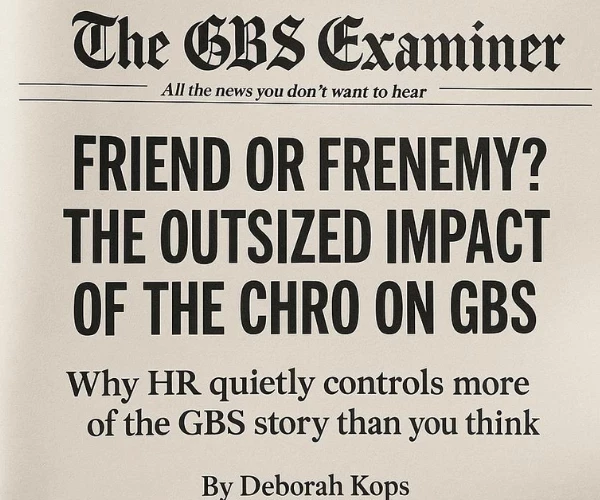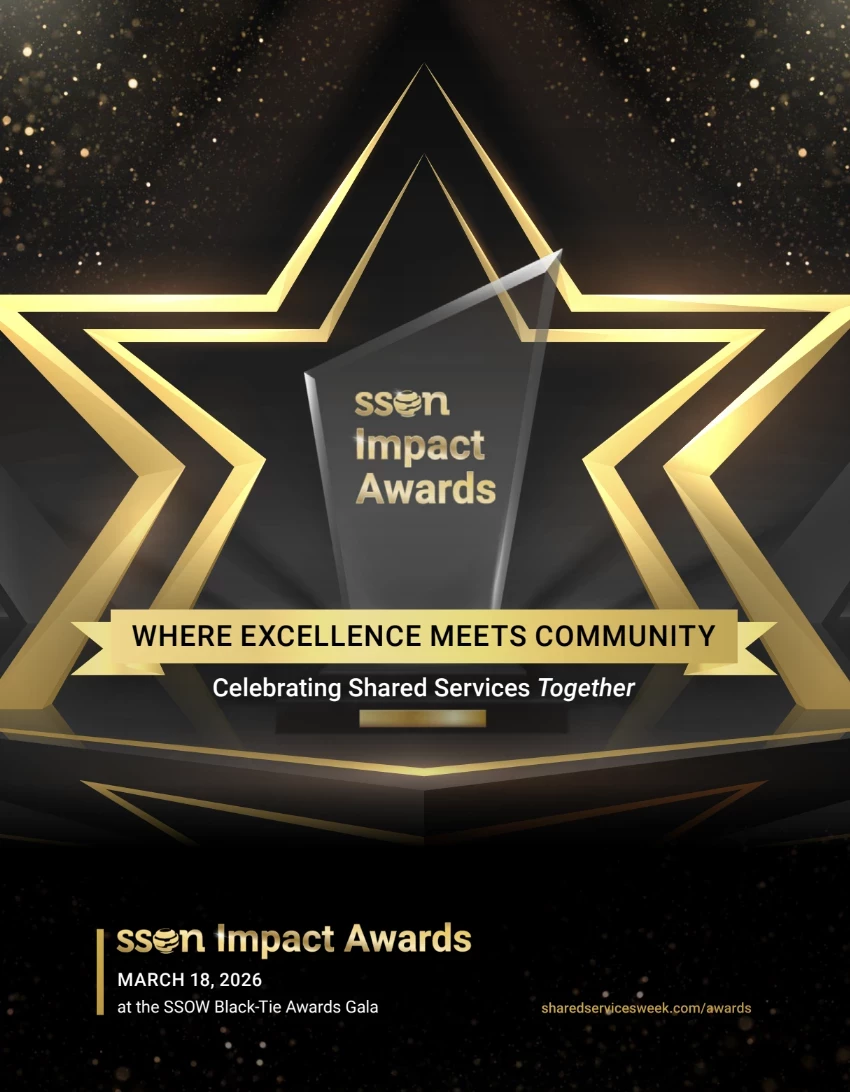BAT’s HR Strategy – Evolving Markets
Add bookmarkInterview with Riette van der Merwe, Regional Head of HR Shared Services and Wimpie Stapelberg, Regional Head HR Business Architecture for the Eastern Europe, Middle East & Africa region of British American Tobacco.
Barbara Hodge: I’d like to understand how BAT operates in the African region. Could you outline how the African operations are being serviced in terms of HR?
Wimpie Stapelberg: In 2004, BAT decided to implement SAP as global HR system. A global template (HR processes and data) was designed and developed in SAP (called Enable), but the deployment of it was never mandated. Just for clarification: Enable = global HR processes and data template + SAP HR system. Africa & Middle East [AME], UK and Americas (except Canada) adopted Enable, whilst Asia Pacific, Western Europe and Eastern Europe didn’t. Either way, Enable allowed us to reduce many of the smaller legacy HR systems substantially within the then Africa Middle East Region. To give you an idea, we have employees in 43 countries just in Africa Middle East.
Enable allowed us to standardise and centralise transactional activities. Within AME we have six areas and within those we’ve set up four satellite service centres and one main shared services centre. Although Enable consisted of multiple HR modules, we made a decision to deploy what we call a SAP-Lite version, covering organisational management and personnel administration.
BH: You have four satellite centres. Where are these located?
WS: If we look at the headcount distribution across Africa and the Middle East, we have 80% of our headcount in six countries, so we positioned the satellites along those countries: North Africa is serviced from Dubai, in the Middle East; Turkey is treated as a single country because of language and the size of that market; West Africa is serviced from Nigeria; and East and Central Africa from Nairobi, in Kenya. The Main Shared Service Centre is in Stellenbosch, and services the Southern Africa Area, which includes ten countries.
BH: How did the implementation work?
Once Enable was deployed, we implemented Org Publisher, which made our Org Structure visible regionally and globally, but which also provided business partners with relevant, up to date org structures and employee data. Before, each and everyone across AME had their own org structures stored either in a drawer or on PowerPoint/Excel – now we have a regional org structure on the intranet and everybody can view it. By deploying Org Publisher we have eliminated the time spent by the business to create org structures as well as reduced the cost of org charting software.
We’ve also implemented electronic employee files by making use of Livelink (OpenText) scanning and we’re now in the second phase of rolling it out to the rest of the region. This is a great enabler for shared services as this was the vehicle we were looking for, to move documents from a country to the main Shared Service Centre for processing. Now we can scan documents in Egypt and process them in Stellenbosch.
What helped us regarding shared services is that we spent plenty of time on standardisation. Business information is much better as a result. Data quality is much better. Training is now delivered to a much smaller group of dedicated systems people and we have significantly decreased the number of fingers who have SAP maintenance access, resulting in better data quality.
There were thus many advantages as a result of moving onto one platform.
BH: Why did Asia Pacific want to lead with a new template instead of adopting the old?
WS: It was decided globally that the current HR systems architecture had some flaws, which could only be ironed out if you had a single global instance of SAP HR. In addition, the HR Model was in need of a change. A global HR transformation project thus started with several projects beneath it, one of which was the implementation of HR Shared Services and a global instance of SAP HR.
Some of the issues we have with more than one SAP HRinstance are, for example, how to deal with international assignees across these instances. A second issue is standardisation and although we made significant progress with standardisation, you do find that regions with their own instance of SAP tend to make some modifications which impact the standardisation agenda. Having more than one instance also means that global reporting is an issue and is not as easy to do. It was thus decided that Asia-Pacific would lead the creation of a new global SAP HR instance, as they and Western Europe were in desperate need of a new HR system while funding of the project was on condition that it would replace the current instances of SAP HR.
This project has been placed on hold in the meantime, as the business is currently going through a major change with the implementation of a single global ERP platform for Marketing, Operations and Finance, and HR has been asked to support the business during this time.
BH: So that is where things stand.
WS: Actually, it gets more interesting! In the past BAT operated as five regions but when our new CEO took over from his predecessor it was decided that it would make more sense to group regions according to volumes and headcount. As a result of this there were some changes in the regional structure. In the past we had Eastern and Western Europe as two separate regions, but with the reorganisation Eastern Europe was combined with Africa and the Middle East to form the Eastern Europe Africa Middle East Region, so we’ve increased our scope from 72 countries to 84 countries.
The East European countries had never implemented the Enable (SAP HR) platform, so we are currently running a project to migrate Russia onto our platform. On the plus side, the global HR Transformation project did run for a year or two and a positive spin-off from it was that we defined global HR processes.
One of our strategies, in terms of global processes, is to outsource the payroll part. In Russia we’ve now gone that route; we’re busy outsourcing the payroll and we’re bringing them onto the Enable platform
After the Russia project we will bring the two remaining areas onto the Enable platform as well, which will give us a headcount of more or less 13,000 people EEMEA on one single platform. From a reporting point of view and from a standardisation point of view, we are each and every day preparing ourselves for the time a single global platform will be available.
The global platform and transformation is also based on shared services implementation and at this stage the vision is that we’ll run three global shared service centres with satellites in certain markets, according to the time zones. The Americas will have an HR SSC in their time zone; Romania may act as the centre for our EMEA region (as we’ve already got a finance shared service centre there); and then ASPAC will be serviced from Kuala Lumpur, Malaysia.
BH: From where are you getting the support for this long-term vision? Who is sponsoring this transformation?
WS: BAT was very much a federal organisation for many years. In 2000, Rothmans International Group merged with British American Tobacco. After the merger, the management board realised that there was too much duplication and too little standardisation whilst many opportunities presented themselves to combine synergies across multiple markets. There was a drive to centralise and standardise things, which flowed over to HR. So where we are today was driven more from the regional side than the global side. Later, it was decided to embark on the HR transformation project I described earlier.
In Africa and the Middle East, we have implemented Ulrich’s model, where you work as Business Partners, Centres of Expertise and Shared Services. AME actually implemented this model first and it was used as a base for the Global Transformation project.
BH: Riette, if I could address you with my next question. I am curious about how you see the potential of the African market place as a provider to global operations.
RVM: To date, the coverage is quite low in Southern African markets and countries. Salaries are still low, so you just need to choose the right country. In South Africa, although we’re part of Africa, our education tends to be higher and turnover is low. People tend to stay in jobs, which is important. And it helps in the shared services environment, because you don’t lose the knowledge.
WS: Many companies are looking at South Africa as a base to provide shared services from, mainly because of the fact that we understand Africa better than a many of the other regions and South Africa is seen as an emerging market.
BH: I’m thinking about the fact that operations go where the markets are, and so with the potential for growth in so many of the African countries, I imagine that we’ll be seeing more and more shared services centres setting up to support regional operations.
WS: I think you’re right because you’ll find a higher educational level in South Africa than elsewhere on the continent. If you go to Dubai – and there is nothing wrong with Dubai – you can find all the skills there, but it is one of the most expensive places to hire someone. I think South Africa is probably the best place to come to if you want to run shared service centres for this region. One also needs to consider the technology available as well as the infrastructure of a country when deciding where to position a Shared Services.
BH: Are more organisations in South Africa considering outsourcing within HR?
WS: Companies are not so much focused on it yet. For companies based in South Africa, their key focus at this stage is actually going into Africa. They want to break into that market so they’re not spending too much time on HR at this stage. They also want HR just to support them so that they can get a footprint into the African market.
BH: What about culturally – is there acceptance of outsourcing as part of a services delivery solution?
RVM: I think it’s a trust issue. You can outsource your services but you can’t outsource your responsibility. The company keeps the responsibility for the record. So the outsource model that we’re looking at for BAT, especially if you talk about payroll outsourcing, relates only to third party payments – the payments of the net, the tax calculation, that type of thing. Inputs and the changes on your payroll stay in-house.
WS: I don’t think that it’s a case of companies not being willing to outsource based on cultural issues. In our case, we’ve globally outsourced our system support to India. The problem we are facing in India is, because of their culture, they tend not to say "no," because "no" for them in their context means failure, therefore they take on more work than they can handle, but they can’t deliver on time because of the workload.
Language is also an issue. It’s always easier to speak to a person across a desk, but we know it’s not always possible. I think we’ve come a long way, at BAT. We run our meetings via WebEx so our travelling costs are not that significant. We drive many things virtually, but, yes, language does play a role, even in Africa and the Middle East; if your telephone lines, your communication lines, are bad, then sometimes these meetings are a complete waste of time.
RVM: The only country where we are not comfortable to do outsourcing is Nigeria. There is simply too much corruption and fraud. So you can’t take the risk of outsourcing unless you outsource to Ernst & Young or PWC. We learned the hard way.
BH: Have you experienced a certain amount of push back?
RVM: Because we’re in Shared Services, a lot of our success is based on the systems we deploy. Trying to deploy ESS/MSS across AME is a challenge purely because of bandwidth (last mile), access to a computer or kiosk for employees, language, and the educational levels of employees.
WS: However, when it comes to change management, it seems as if the business is more ready for change whilst HR is holding back. It’s not the guys in administration or shared services – it’s the HR business partners [HRBPs]. They struggle the most to change, to adapt to this new model.
RVM: Our model aims to take away repetitive admin from the centres of expertise and the business partners – so that they can focus on strategic things. There is however a component where HRBP’s have to supply HRSS with org and people changes, otherwise the systems cannot be updated, and here they feel it is not part of their responsibility.
WS: The other point is that the Shared Services processes focus much more on the trigger point, where a process begins, so HRBPs are now standing at the trigger point of a process and they’re not delivering in terms of the requirements; therefore, the result is that shared services is not getting the information required in the format required. If you provide inferior data, Shared Services will capture inferior data. The problem is that the business partners believe they’re not the owner of data and that data ownership sits within shared services. We try to break that myth because they are the guys providing us with the data; they own the data. We can only execute what they tell us to do.
BH: That is interesting because in some other cases, shared services feels that it does own the data.
WS: Well, we only put it in the system. We can only put in what they give us, what we receive. If we receive garbage, we put garbage in the system. Certainly we do our utmost best to put in data controls, checks and audits, but ultimately we can not be held accountable for the data quality.
RVM: We were often blamed/accused of the data quality in the systems, but when we reviewed the source documents, 90% of the time the source documents were incorrect. So we had to take a stand and say, no, it can only be as good as what we receive.
BH: How are you trying to improve this bottleneck?
RVM: We continuously check via monthly audit reports that are sent back to the business partners.
WS: We’re now looking at putting in more rigid, standardised and customer friendly templates that they can use as trigger point of a process. You also have to ensure the appropriate governance processes are in place; your audit and controls should be effective to ensure that your processes are working very well. If you focus on those things, and push back if you get inferior quality, you’ll get there. Since we made some metrics for Org Management visible in the region, quality suddenly improved and errors were reduced. It also spearheaded some competition amongst the areas and the result was that the standards were raised.
BH: People talk a lot about growth markets, and shared services are supporting these growth markets – Latin America, Asia Pacific, Africa. We will undoubtedly see more and more activity in this region, so the question is: What about providers? Do you have reliable partners in the region? We see a lot of these providers all over these growth markets. Are they also in Africa – in South Africa, or in some of the other African countries?
WS: I think we do get them, but I think that Shared Services is still in its infant stage. I think there is a need for consolidation, that there are too many people that provide these services and although I’ve seen a payroll company here in South Africa that has a major footprint and a major client base already, overall, there are not many of these organisations around. I think more and more, as opportunities present themselves, you will find organisations starting up as shared services organisations.
RVM: Shared outsource, yes. That’s the end game for us.
BH: To commercialise your operations?
RVM: To commercialise, absolutely.



















